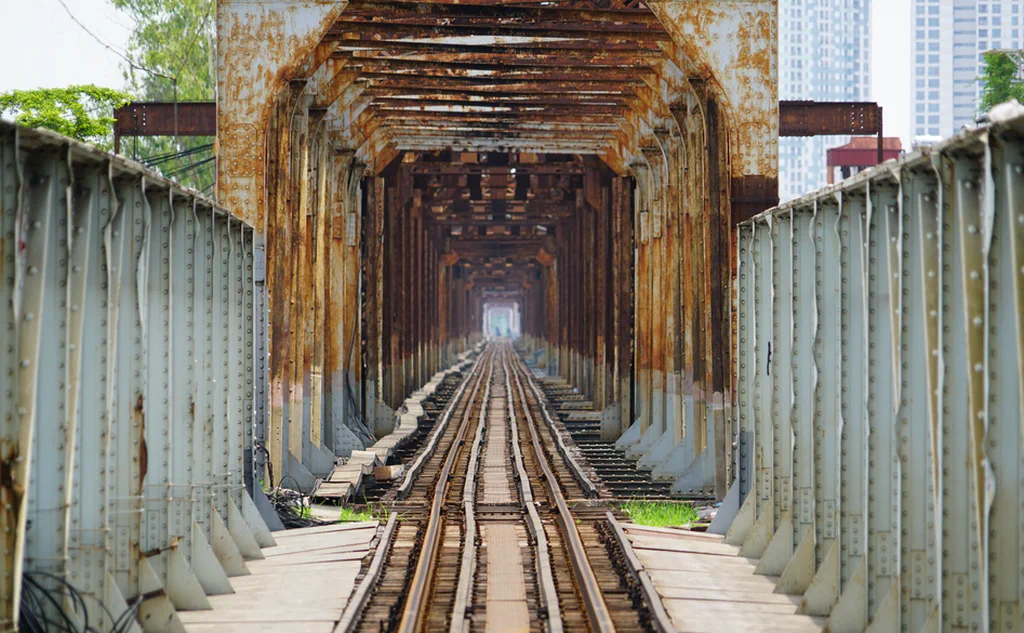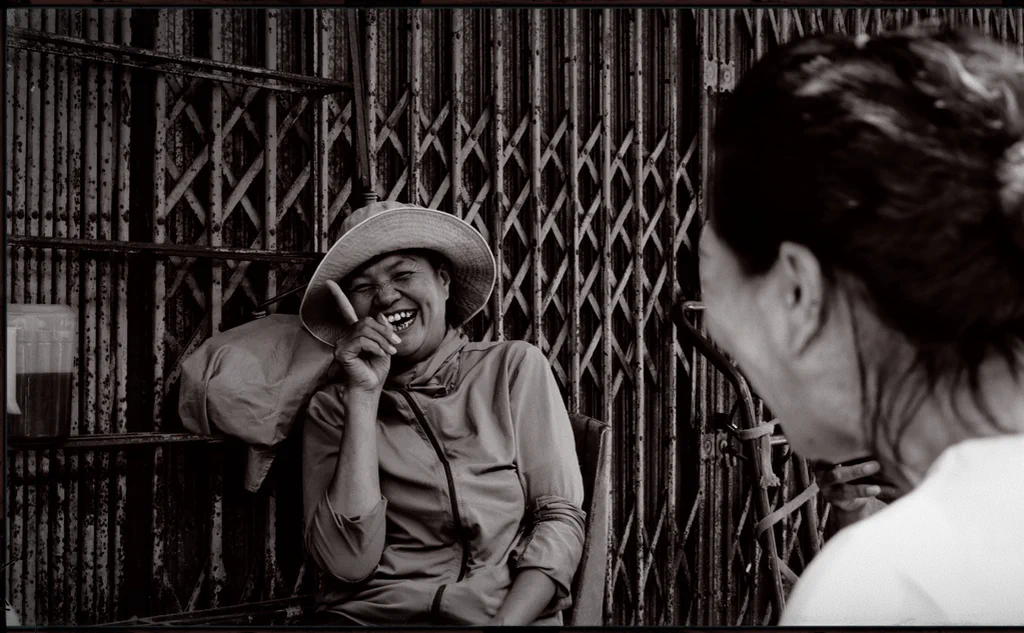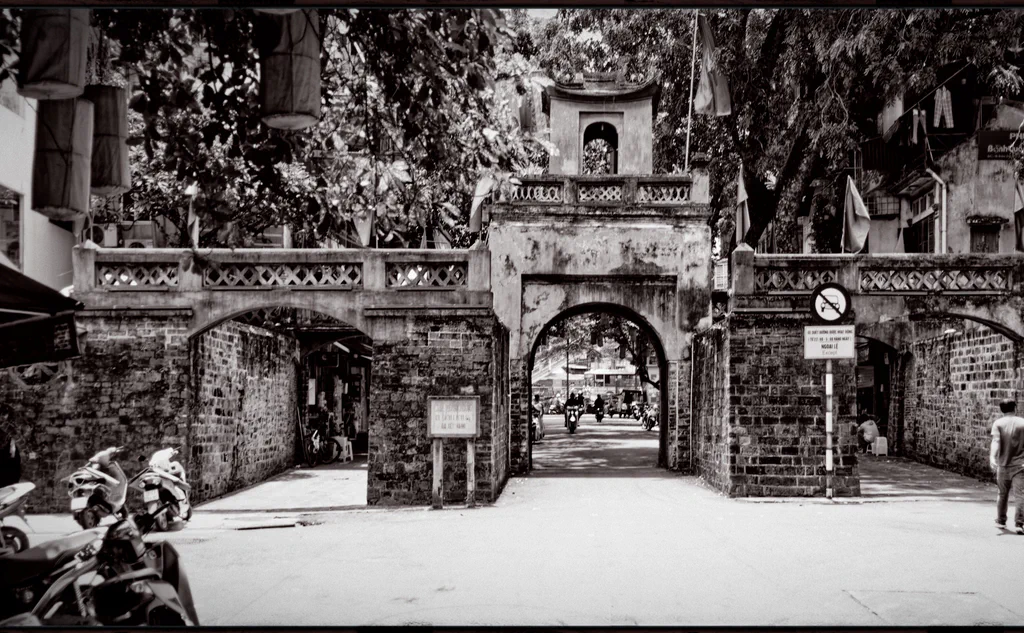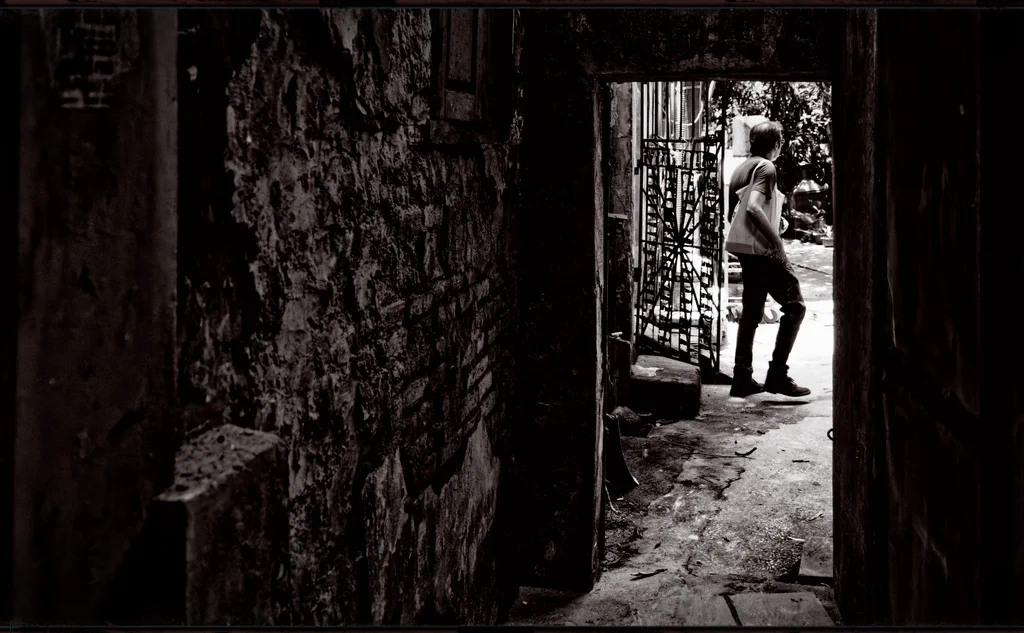Day 3 - 13th June
On the third day, our hike takes us through a myriad of impressive places. With Nico leading the way, we amble through narrow lanes, bordered by mysterious doors and tall stone buildings from the French colonial era. Although it’s still early, the town has long since awakened to life, and the sounds of the ubiquitous mopeds merge again into a honking symphony.
Bamboo
I’m overwhelmed. I stand on Phố Hàng Vải street, surrounded by a sea of bamboo products. Bamboo ladders rest against walls, fishing rods protrude above the stalls, and bamboo whistles and hooks lie about seemingly haphazardly. Every available space is used to display the variety of handmade bamboo goods. My camera sways this way and that, not settling anywhere. I attempt to capture the chaos, but I feel like a new pupil trying to grasp the first lesson. Beside me stands Vincent, deeply engrossed in his own photographic world, capturing every facet of life here before setting off on his own to create, as we would later learn, a very personal photo story.
The Road Under the Bridge
We proceed to a narrow road, Phố Gầm Cầu, at the base of a mighty bridge which we’ll also view later. This road has no pavements whatsoever, and some parts of it are just 1.5m wide. The lack of vehicle traffic still leaves little room for the myriad of stalls and carts. The scent of grilled beef and rich butter fills the air, and I pause for a moment to capture it. Nico suggests I lower my camera’s perspective to better capture the dynamics of the street vendors.
I still find it challenging to photograph people from the front. In Europe, especially in Germany, I’ve often faced rejection, even disapproval, when trying to capture everyday scenes, inadvertently putting people in the spotlight. The resulting debates about one’s image rights or outright aggression have damped my enthusiasm. Now, in a foreign country, whose laws and language I’m unfamiliar with, I’d rather not risk exposing myself to such confrontations. Hence, on this day, I continue to take many pictures from behind.
Ga Long Biên
Upon reaching the small Ga Long Biên station, I’m taken aback by the silence. In stark contrast to the bustling street life I’ve seen so far, the station is a haven of tranquillity. It seems a train stops here only once or twice a day. The trackbed lies dormant in front of us.
With our cameras, we try to capture the stark charm of the deserted tracks. But before we can start, uniformed officials chase us away. Their stern looks and assertive gestures leave no doubt about their intent. The officials wave their arms, shouting after us as we’re hustled out.
The Bridge Over the Red River
The Cầu Long Biên Bridge is a marvel of engineering. Constructed between 1899 and 1902, it spans the Red River, connecting Long Biên, the sole district on the river’s east bank, with districts in the heart of historic Hanoi. A stream of mopeds whizzes by. I attempt to capture the moment – the roar of engines, the bustling traffic, and the occasional pedestrians who, instead of using the pavement, tread cautiously on the railway tracks.
Due to its strategic importance, the bridge was heavily contested during the Vietnam War. The iron struts of the bridge are coated with a patina of rust, a silent testament to the past century, from the colonial period through the Vietnam War to the present day.
By the City Gate
The old Ô Quan Chưởng city gate is our final stop. It’s one of the old city gates to the east of the wall that surrounded the imperial city of Thăng Long. Constructed during the Cảnh Hưng era (1749), the land outside the gate was once considered suburban. The imposing triple gate and the stone plaque forbidding guards from harassing the citizens speak of a bygone era. Sadly, capturing it with a camera proves difficult as modern buildings and roads sever it from its historical context.
Train Street
In the early evening, I venture alone to the tourist-frequented Railway Street. It’s a captivating place. On this narrow alley, squeezed between closely packed houses, trains rumble just a few centimetres away from the facades. Unfortunately, tonight’s train is cancelled, as workers are busy repairing the trackbed. Only a handful of tourists are present.







